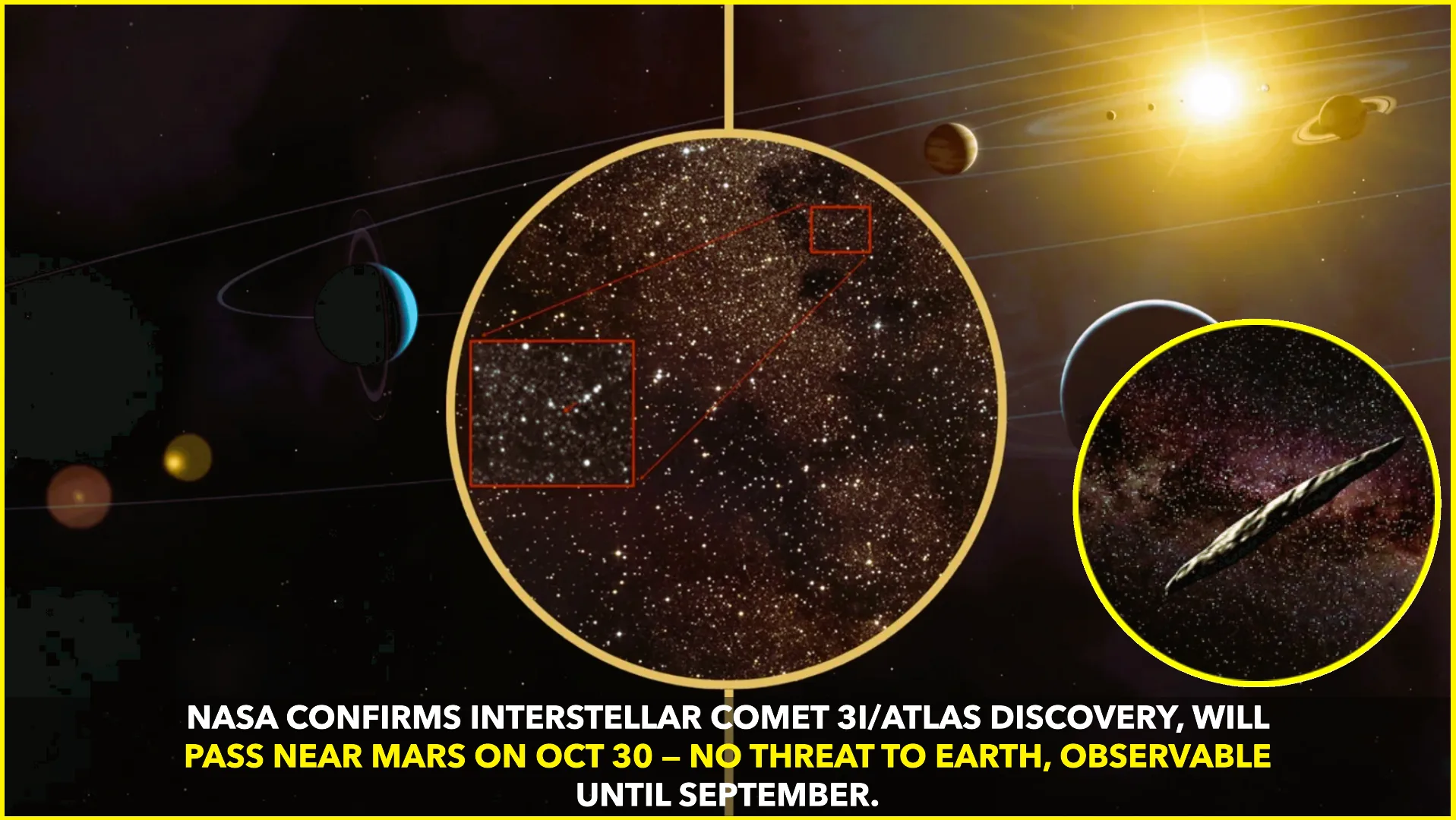NASA has officially confirmed the discovery of a new interstellar comet named 3I/ATLAS, marking only the third such object ever observed entering our solar system from beyond. The comet was detected on July 1, 2025, by the Asteroid Terrestrial-impact Last Alert System (ATLAS) survey telescope located in Chile.
Traveling at extraordinary speeds and originating from outside our solar system, 3I/ATLAS is currently located about 670 million kilometers (approximately 420 million miles) from the Sun. It is approaching from the direction of the constellation Sagittarius. According to NASA, the comet will make its closest approach to the Sun on October 30, 2025, when it will pass just inside the orbit of Mars, still at a safe distance from Earth.
The prefix “3I” in its name designates it as the third known interstellar object, following 1I/ʻOumuamua discovered in 2017 and 2I/Borisov in 2019. What makes 3I/ATLAS unique is its highly hyperbolic orbit, which confirms it is not gravitationally bound to the Sun and is merely passing through the solar system on a one-time journey.
Astronomers across the globe are excited about the opportunity to study this rare visitor. “These interstellar objects are incredibly valuable for science because they bring material from other star systems,” said Dr. Amy Mainzer, an astronomer and comet expert at the University of Arizona. “It’s like getting a piece of another solar system for free.”
NASA and international observatories are mobilizing their most advanced instruments to collect data on the comet’s composition, speed, trajectory, and behavior as it approaches perihelion (its closest point to the Sun). This research will help scientists gain further insights into the formation and evolution of planetary systems beyond our own.
Initial observations suggest that 3I/ATLAS has a coma—the fuzzy envelope of gas and dust surrounding its core—indicating active sublimation as it warms up. However, it is still too early to determine whether it will develop a spectacular tail visible to the naked eye. Current visibility projections indicate that it may be observed using telescopes through September 2025, after which it will disappear behind the Sun. It is expected to reemerge in early December 2025, offering another brief window for observation before it exits our solar system permanently.
Crucially, NASA has confirmed that 3I/ATLAS poses no threat to Earth. It will remain well outside the Earth-Moon system and is not expected to come anywhere near a collision path.
The discovery underscores the growing capabilities of ground-based sky survey systems like ATLAS, which are designed not only to detect potentially hazardous near-Earth objects but also to capture rare and scientifically valuable events like this one.
“Every interstellar object we detect provides a fresh perspective on the galaxy,” said NASA’s Near-Earth Object Observations Program scientist Kelly Fast. “They are messengers from other worlds.”
As astronomers continue to track and analyze 3I/ATLAS, the public is encouraged to stay tuned to NASA updates and local observatory reports for possible opportunities to view the comet during its brief visit through the inner solar system.
Source: NASA, Jet Propulsion Laboratory, ATLAS Survey










